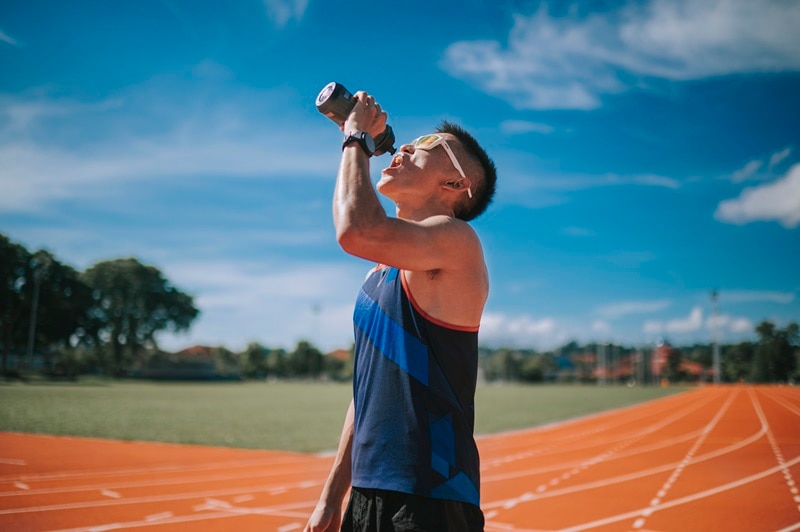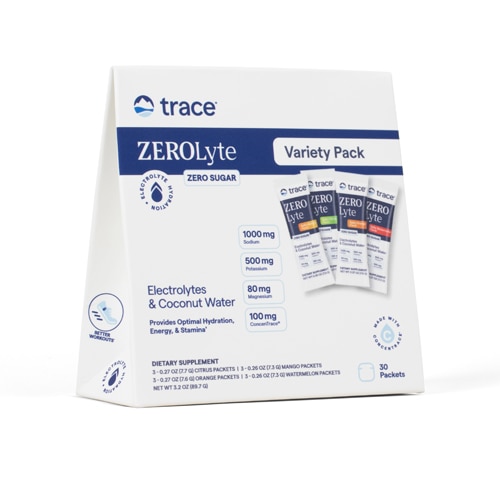[vc_row][vc_column][vc_column_text]If you've ever felt off after a
sweaty workout,
stomach bug or even a long, hot day, you may have been experiencing an electrolyte imbalance.
Electrolytes are minerals, including sodium, potassium and magnesium, that
help your body perform essential functions such as staying hydrated, contracting muscles and sending signals through your nerves. You
lose electrolytes naturally through sweat, urine and illness, and if you're not taking in enough through food or drink, it can throw off your system.
You might barely notice
the signs of low electrolytes at first, but without replenishing them, the effects can be severe and even dangerous. Mild
symptoms such as fatigue or muscle twitches are easy to miss, but more
serious imbalances can cause confusion, heart rhythm problems and seizures. Understanding what to watch for and what to do about it can help you stay ahead of the risks.

How Electrolytes Work in Your Body
Electrolytes aren't just a buzzword on sports drink labels. They play real,
critical roles in how your body functions. Sodium, potassium, magnesium and calcium are minerals that carry an electric charge that aids cell communication and muscle movement.
Sodium is crucial for fluid balance as it regulates how much water is inside and outside of your cells and also facilitates nerve and muscle activity. Potassium also supports nerve function, but it's especially important for steady muscle contractions and keeping your heart rhythm regular.
Magnesium is involved in more than 300 enzyme reactions in the body, including ones involved in muscle relaxation and nerve signaling. Calcium helps your muscles contract, nerves fire and blood clot properly.
When any of these minerals get too low, you'll soon experience symptoms that worsen the longer you go without replenishing them.
What Happens When Your Body is Low on Electrolytes
Your body is fairly good at keeping electrolytes in balance, but it's not foolproof. Losing too many of these minerals through sweat, illness or a restrictive diet can lead to a range of symptoms, some of which are easily missed at first.
Mild symptoms
Early
signs can be subtle. Watch for:
- Slight headache
- Muscle twitches
- Mild dizziness when standing
- Dry lips and mouth
- Craving salty snacks (especially after sweating)
Moderate symptoms
As levels drop,
symptoms become more noticeable and include:
- Muscle cramps or spasms that won't go away
- Heart palpitations
- Ongoing fatigue or weakness
- Lightheadedness when standing
- Tingling in hands and feet
- Mood changes (irritability, restlessness)
- Hitting a wall during activity
- Difficulty recovering during activity
Severe symptoms
When levels fall dangerously low, it is a medical emergency. Seek immediate care if you or someone else
experiences:
- Confusion
- Fainting
- Chest pain
- Seizures
- Paralysis
- Severe diarrhea or vomiting
Why Electrolyte Levels Drop
Electrolyte deficiencies can happen for many reasons, including the obvious ones like after a marathon or food poisoning. Low levels are more common than you might think, especially if your diet or lifestyle includes any risk factors.
Not eating enough mineral rich foods is a major
cause of
low electrolyte levels. Diets that are low in fruits, vegetables, nuts, seeds and dairy (or fortified dairy alternatives) often
miss the mark on magnesium, potassium and calcium. Highly processed or very low calorie, low-carb and
keto diets can also lack variety, leaving you short on important electrolytes over time.
Losses through sweat, vomiting or diarrhea can
quickly deplete your body's supply, especially
when it comes to sodium and potassium. A stomach bug or long, hot day outdoors can easily lead to dehydration if you're not careful. Certain medications like diuretics or proton-pump inhibitors (PPIs), can also increase urinary losses of magnesium, potassium and sodium.
How to Stay Balanced
Keeping your electrolyte levels in check starts with two things: good hydration and a diet that includes a variety of mineral-rich foods.
Aim for 2.5 to 3.5 liters of fluids per day for men and 2.0 to 2.5 liters for women. You'll need even more if you're active or it's hot outside.
Don't wait until you're thirsty to drink. Instead, hydrate consistently throughout the day and bump up your intake
before and after exercise. If you're working out, use a
smart strategy to hydrate:
- Pre-exercise: Drink 500–600 ml (about 17–20 oz) of water 2–3 hours before activity. Add a pinch of sea salt if you expect to sweat heavily.
- During exercise: Sip 200–300 ml every 10–20 minutes. For workouts longer than an hour, choose a drink with sodium (400–1150 mg/L), potassium (78–250 mg/L), and some carbs (4–8% concentration) to help with energy and absorption.
- Post-workout: Rehydrate with 1.5 times the fluid lost. If you’re unsure how much you’ve lost, a good rule of thumb is to weigh yourself before and after intense exercise.
Whole foods are still the best go-to source for electrolytes. Add more pickles, olives and salted nuts for sodium. Bananas, potatoes and coconut water will help you get enough potassium. You'll find magnesium in pumpkin seeds, dark chocolate and black beans. For calcium, reach for foods like Greek yogurt, tofu and kale.
If you're looking for a convenient, no-calorie way to supplement your intake, especially on busy and high-activity days,
Codeage Keto Electrolytes are a practical option. It provides sodium, potassium, magnesium and calcium in one capsule-based formula with zero carbs or sugar. It's also vegan and free from gluten, dairy and soy. Just keep in mind that supplements can support your hydration routine, but they work best combined with a balanced diet and regular fluid intake.[/vc_column_text][/vc_column][/vc_row][vc_row][vc_column][vc_text_separator title="Featured Products" border_width="2"][vc_row_inner equal_height="yes" content_placement="middle" gap="35"][vc_column_inner width="1/3"][vc_single_image image="185972" img_size="full" alignment="center" onclick="custom_link" img_link_target="_blank" css=".vc_custom_1751402965111{padding-right: 7% !important;padding-left: 7% !important;}" link="https://www.vitacost.com/trace-minerals-research-40-000-volts-electrolyte-concentrate"][/vc_column_inner][vc_column_inner width="1/3"][vc_single_image image="185971" img_size="full" alignment="center" onclick="custom_link" img_link_target="_blank" css=".vc_custom_1751402977522{padding-right: 7% !important;padding-left: 7% !important;}" link="https://www.vitacost.com/selina-naturally-celtic-sea-salt-electrolyte-powder-4-2-oz"][/vc_column_inner][vc_column_inner width="1/3"][vc_single_image image="185970" img_size="full" alignment="center" onclick="custom_link" img_link_target="_blank" css=".vc_custom_1751402989408{padding-right: 7% !important;padding-left: 7% !important;}" link="https://www.vitacost.com/pirq-electrolyte-drink-mix-hydration-powder-packets"][/vc_column_inner][/vc_row_inner][/vc_column][/vc_row]





